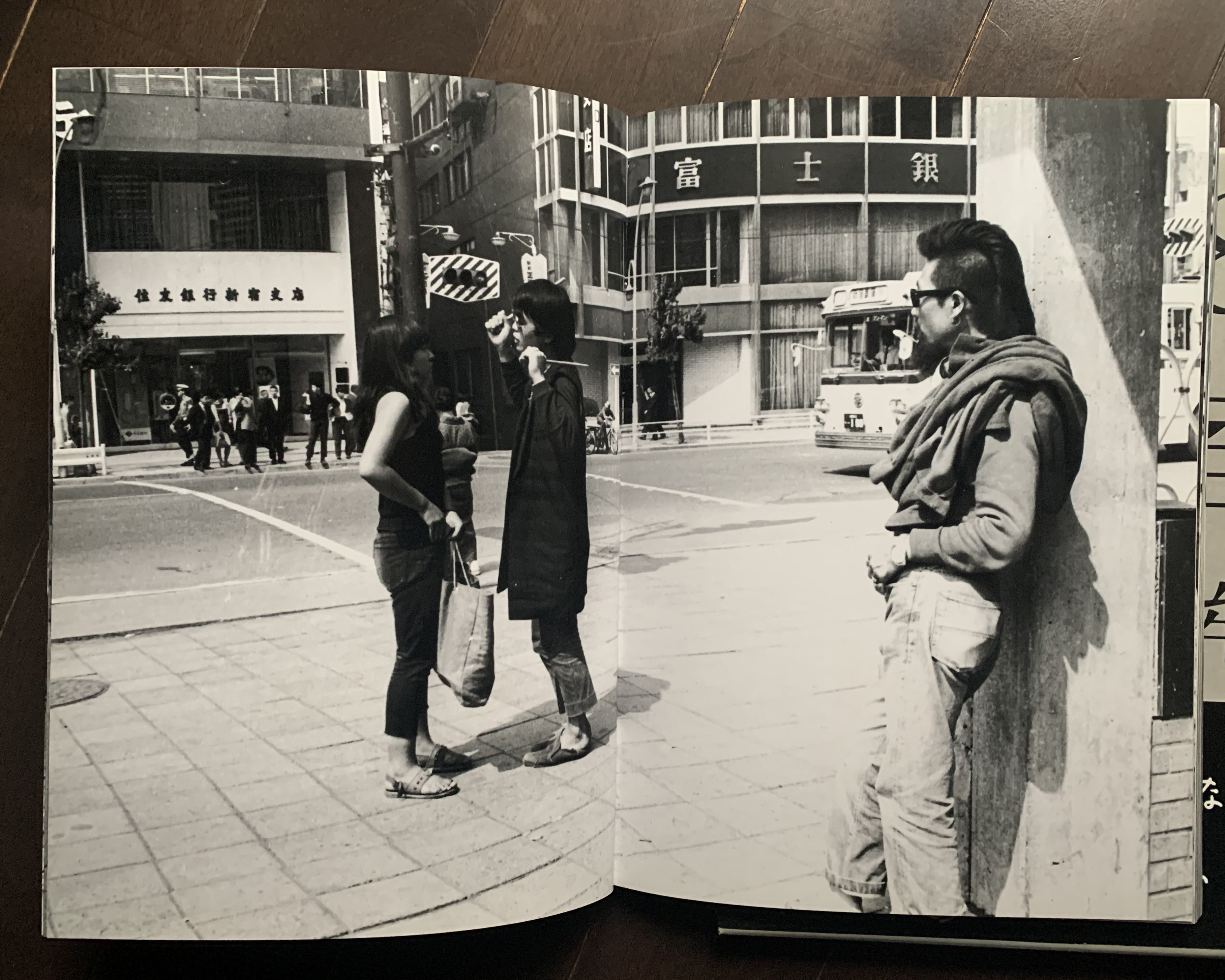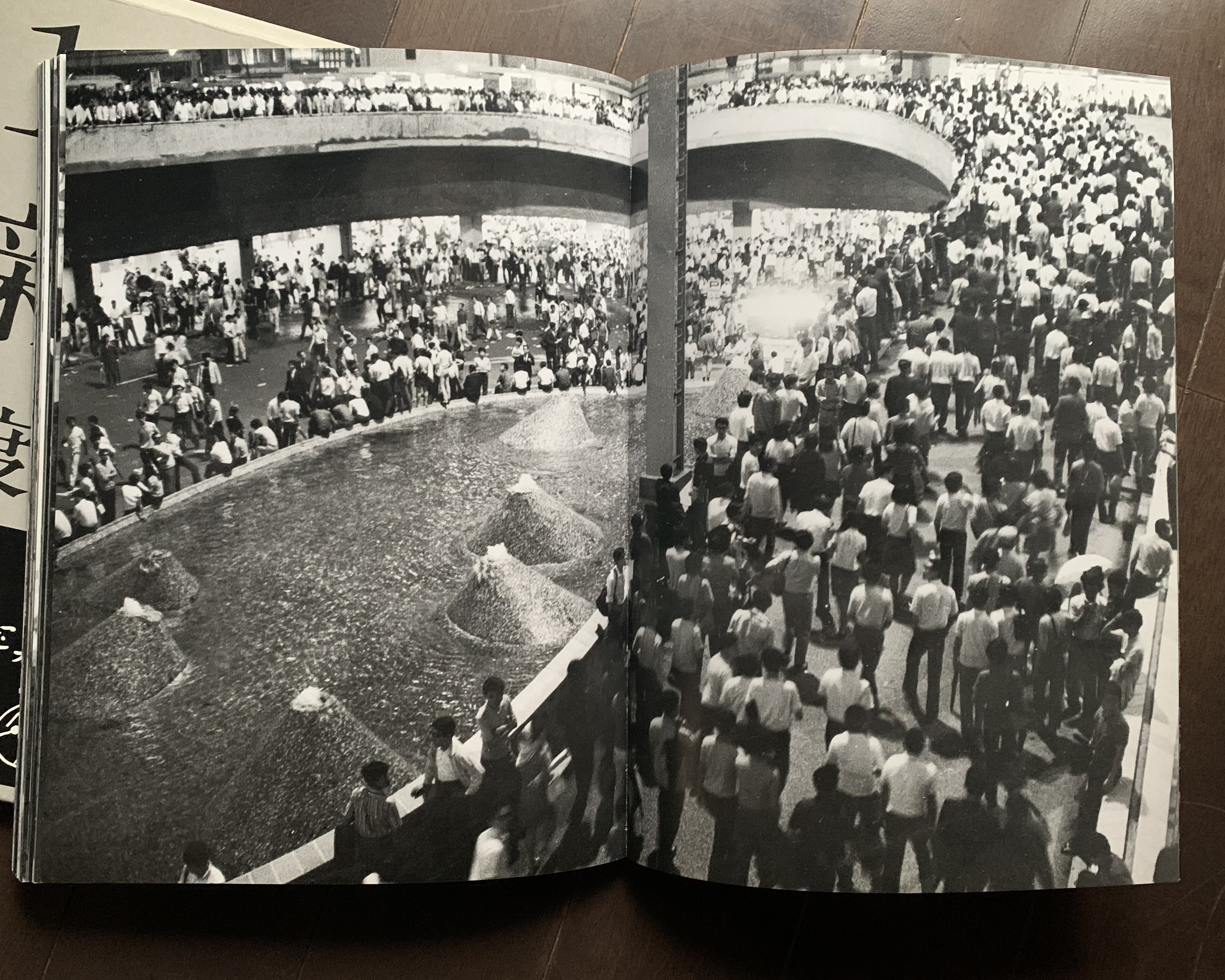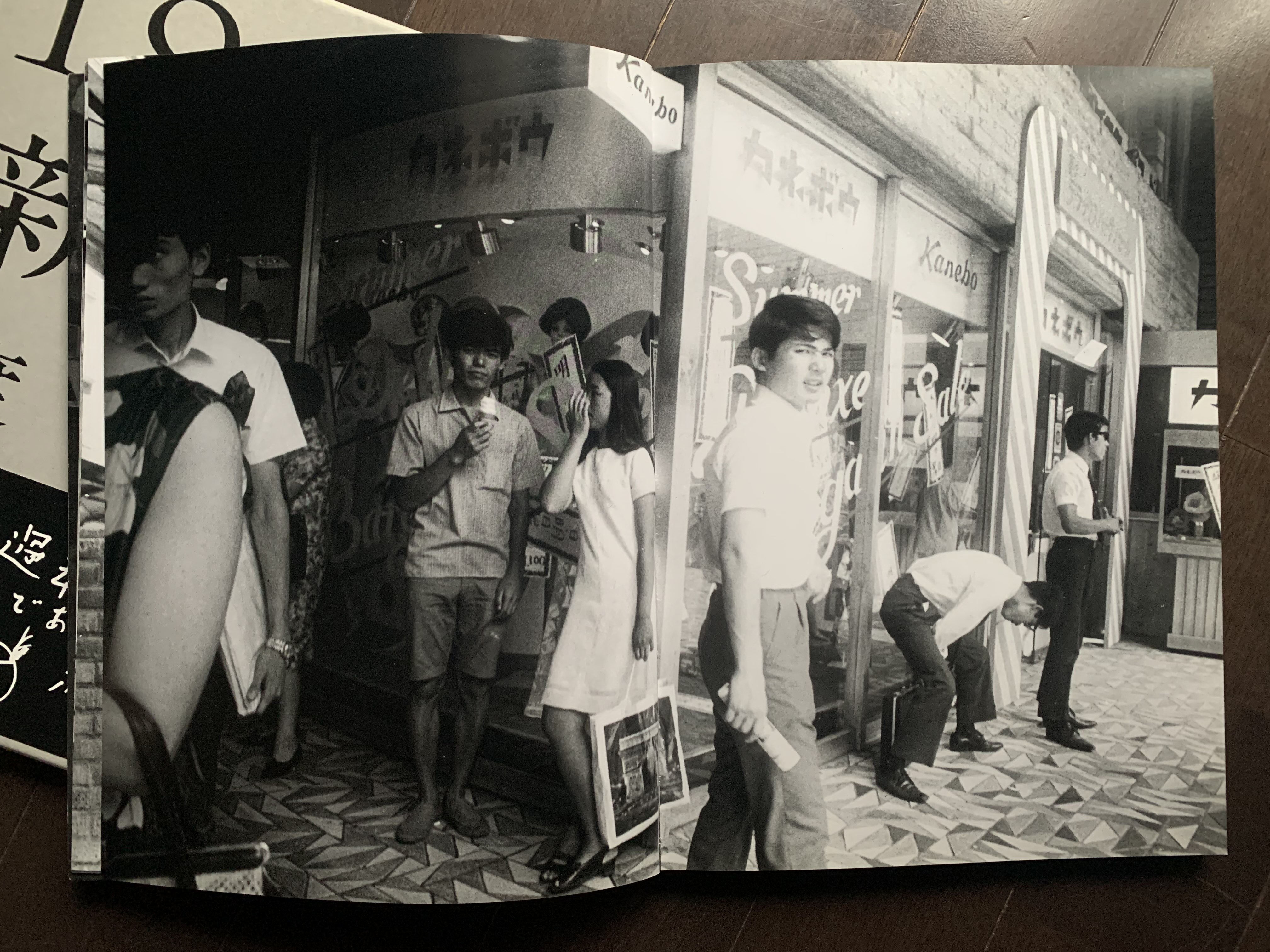コラム
落合憲弘
John Sypal
タカザワケンジ
なぎら健壱

Tokyo’s Shinjuku district- this dynamic, sometimes chaotic area is a crossroads, an entrance/exit to the city, a maze, a true spectacle, day or night. With its web of galleries and camera shops, it’s also a major hub of the city’s photographic culture. Thus it has inevitably drawn photographers and likewise is the subject of several photobooks- Shomei Tomatsu’s “Oh! Shinjuku”, Koji Onaka’s “Younger Days in Shinjuku” (which I wrote about here previously), and the massive “Moriyama・Shinjuku・Araki”, from 2005. These are just the ones with “Shinjuku” in the title that I could remember off the top of my head. There’s doubtlessly more, I am sure. Perhaps only Shibuya or Ginza might come close in terms of names-in-titles. (Certainly I can’t imagine a photobook depending on “Gotanda” or “Ayase” for impact)
Certainly today’s book, Hitomi Watanabe’s “1968 Shinjuku” deserves a place not only on the Shinjuku section of your shelves, but a prominent spot among the best street photo collections in the medium.
Now, most are familiar with the Great Men who Provoked their way into photographic history. Several are of the sort are listed in the paragraph above. However, the fact that there were young women doing just as interesting work is something that books like this one prove- and even better, enrich photographic culture with.
As a young woman, Hitomi Watanabe roamed Shinjuku in the late 60s with her Canon rangefinder, snapping away at the youth culture that was erupting (and demonstrating) there. Regularly showing and publishing work in Japan’s photography magazines in the late 60s and 70s, she is known for her protest pictures- (her access into the protest movements is explained in this interview here https://aperture.org/editorial/behind-barricades-watanabe/).
While there is a library’s worth of 1968 Japanese Protest photobooks out there, from what I’ve seen, the individuality and personal perspective found in her pictures sets them apart from everyone else. Now, personally, I’m not particularly interested in political or protest photography- similar to festivals (which I do like)- the details or demands of demonstrators are, in photographs, overwhelmed by the emotional, visual spectacle of the events. To me, every protest (or festival) is, in the end, part of one never-ending protest or festival. No one’s really going to give you a detailed, reasoned explanation for Asakusa’s Sanja Matsuri- you don’t really need one. The event is enough. I know there’s lots of political, societal context available to the crowds of students in Shinjuku in 1968- but nothing, aside from the text seen in some posters, really explains any of it. Looking at the images in Watanabe’s book, I wonder how many participants were there for the politics or for the thrill, or maybe for the girls or just to gawk. Perhaps a major draw was to feel a sense of belonging to something with a purpose in a country whose familial traditions were fraying and pressure to succeed was increasing.

I’m going backwards here- The book builds to the events of the International Anti-War day in October of 1968- a riot of sorts outside of Shinjuku station which she captured that event in a flurry of grain and grit- but it’s her snapshots of youth life which bring me back to this book again and again. Before the construction of the skyscrapers and business growth that pushed them westward to Shimokitazawa and Kichijoji, or southward to Shibuya, Shinjuku was THE center of Tokyo’s youth culture in the 1960s. These kids did more than just protest or hang out in cafes- Watanabe documented the avant-garde “happenings” which, well, happened, as well. Her pictures have an immediacy to them- that intensity and curiosity that kids in their twenties engage the world. Likewise, her protest images show the flipside- that early-twenties insecure, stubborn righteousness that young men inflame themselves and their surroundings with. This mixture of posture and innocence makes for a fascinating book, to say the least.
A lot of life has happened since these pictures were taken. As I flip through these pages I think about how these vibrant, beautiful young people we see here are now in their 70s and perhaps the same grayed, older folk next to us in Tokyo’s subways and trains.
Here though, they retain their youth. Perhaps its what Nobuyoshi Araki was attuned to when he wrote his quote for the book’s obi:
"These aren’t photographs of the past- they're photographs that live in the present."
Hitomi Watanabe’s 1968 Shinjuku is a must-have for anyone interested in pictures like these. To see this time and this place through the eyes of an energetic, independent young woman is a treasure, indeed.

渡辺眸さんは、1960年代後半、カメラを手に新宿を歩き回り、そこで勃発した若者文化(デモ)をスナップしていました。1960年代後半から1970年代にかけて、日本の写真雑誌に定期的に作品を発表、プロテスト写真で知られています。図書館などで見かける1968年の日本のプロテストの写真集は他にもあるようなのですが、私が見た限りでは、彼女の写真にある好奇心や優しさという個人的な視点は、他の誰とも違うものでした。

個人的には、政治的な写真やプロテスト写真には特にあまり興味がないのです。お祭り写真と同じで、デモ隊の写真では、イベントの感情的、視覚的スペクタクルに圧倒されてしまうのです。1968年の新宿の学生の群れについては、多くの文脈があることは知っていますが、ポスターに見られるテキストを除けば、それを写真の中に説明するものは何もありません。渡辺さんの写真集に掲載されている写真を見ると、どれだけの参加者が政治やスリルを求めて、あるいは女性などはただ見物するためにそこに居たのだろうか、と想像します。おそらく、家族的な伝統がほころび、成功へのプレッシャーが高まる中で、目的を持った何かに属しているという感覚を得ることが、大きな魅力だったのでしょう。
しかし、私が何度もこの本に立ち返るのは、彼女が写す「若者の生活のスナップショット」があるから。超高層ビルの建設やビジネスの発展によって、下北沢や吉祥寺や渋谷に押し出される以前の1960年代、新宿は東京の若者文化の中心地であったそうです。

この若者たちは、単にデモをしたり、カフェにたむろしたりするだけではありません。渡辺さんは、アヴァンギャルドな "ハプニング "も記録したのです。彼女の写真には即効性があって、この写真には20代の若者たちが世界と関わるのと同じような強度と好奇心があります。それと同時に、裏返しの側面もあります。20代前半の若者(特に男子)が自分自身とその周囲を煽るような、不安で頑固な正義感です。このような姿勢と無邪気さが混在していることが、この本をより魅力的なものにしています。

これらの写真が撮られた時から、もう54年が経ってます。この写真集のページをめくりながら、ここに写る活気に満ちた美しい若者たちは現在70代ではないか、おそらく東京の地下鉄や電車で席を譲る白髪の年配の人々なのだろうな、と考えています。でも、このページに若さが残っています。
渡辺眸さんの『1968新宿』は、こういう写真に興味がある人なら必携の一冊。エネルギッシュで自立した若い女性の目を通して、この時代、この場所を見ることができるのは、まさに宝物です。
渡辺眸『1968新宿』
- Hitomi Watanabe "1968 Shinjuku"
街から舎刊行・2014年・160ページ・3,300円
 26 Duets? Duels? Near-overlaps of time and Space across Tokyo. 東京の時間と空間が重なり合う写真集ツアー
2025/04/04
26 Duets? Duels? Near-overlaps of time and Space across Tokyo. 東京の時間と空間が重なり合う写真集ツアー
2025/04/04
 25 Naoki Ishikawa "TOKYO The City Where I Was Born" 石川直樹『東京 ぼくの生まれた街』
2024/01/05
25 Naoki Ishikawa "TOKYO The City Where I Was Born" 石川直樹『東京 ぼくの生まれた街』
2024/01/05
 24 山内道雄 Michio Yamauchi『TOKYO UP CLOSE』
2023/10/20
24 山内道雄 Michio Yamauchi『TOKYO UP CLOSE』
2023/10/20


PCT Membersは、Photo & Culture, Tokyoのウェブ会員制度です。
ご登録いただくと、最新の記事更新情報・ニュースをメールマガジンでお届け、また会員限定の読者プレゼントなども実施します。
今後はさらにサービスの拡充をはかり、より魅力的でお得な内容をご提供していく予定です。
 「Photo & Culture, Tokyo」最新の更新情報や、ニュースなどをお届けメールマガジンのお届け
「Photo & Culture, Tokyo」最新の更新情報や、ニュースなどをお届けメールマガジンのお届け 書籍、写真グッズなど会員限定の読者プレゼントを実施会員限定プレゼント
書籍、写真グッズなど会員限定の読者プレゼントを実施会員限定プレゼント